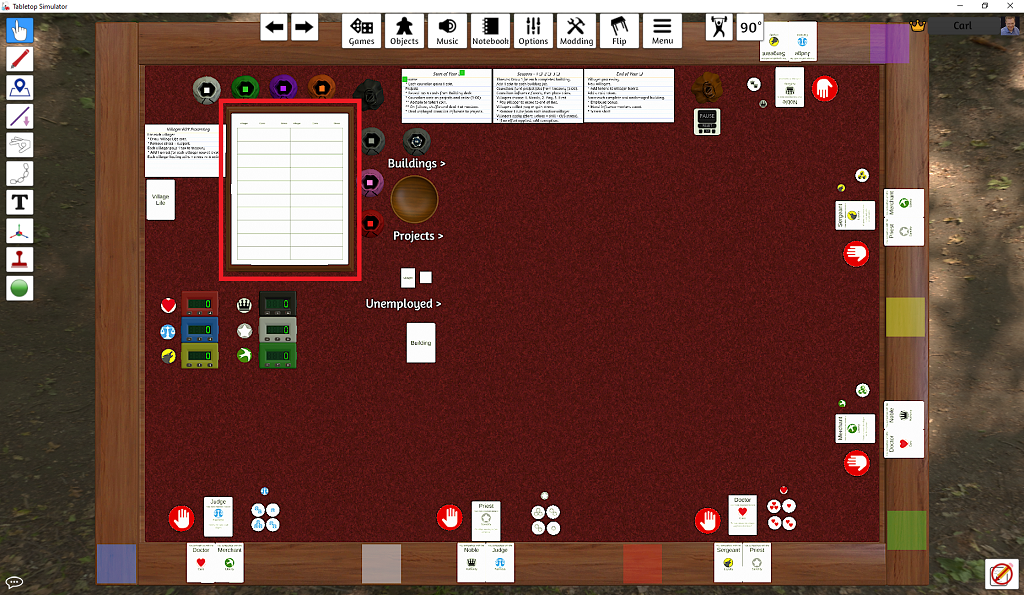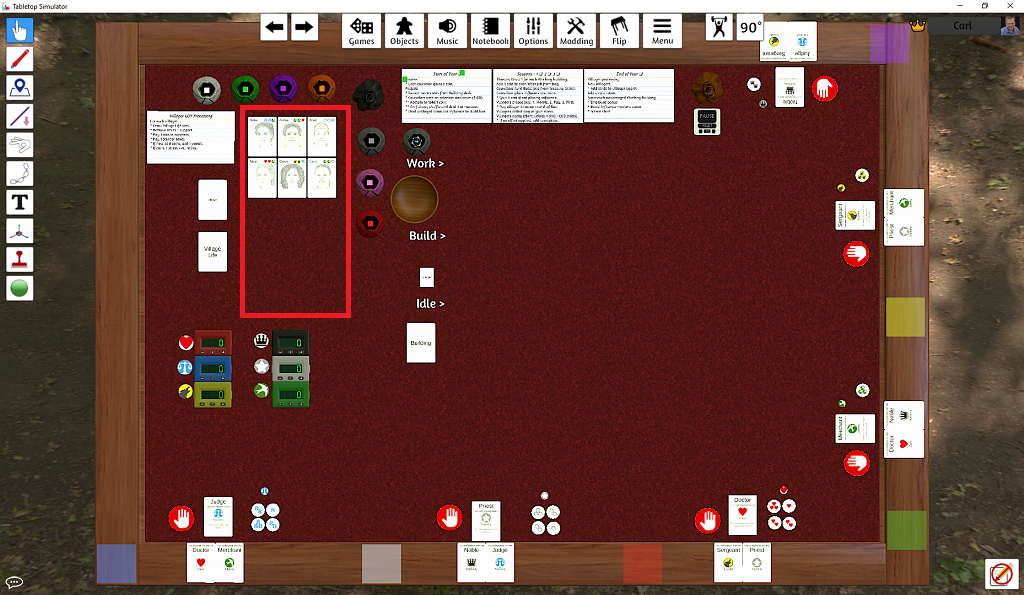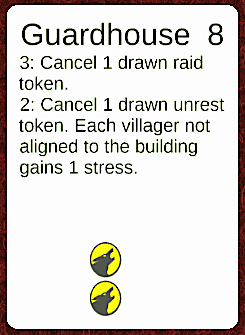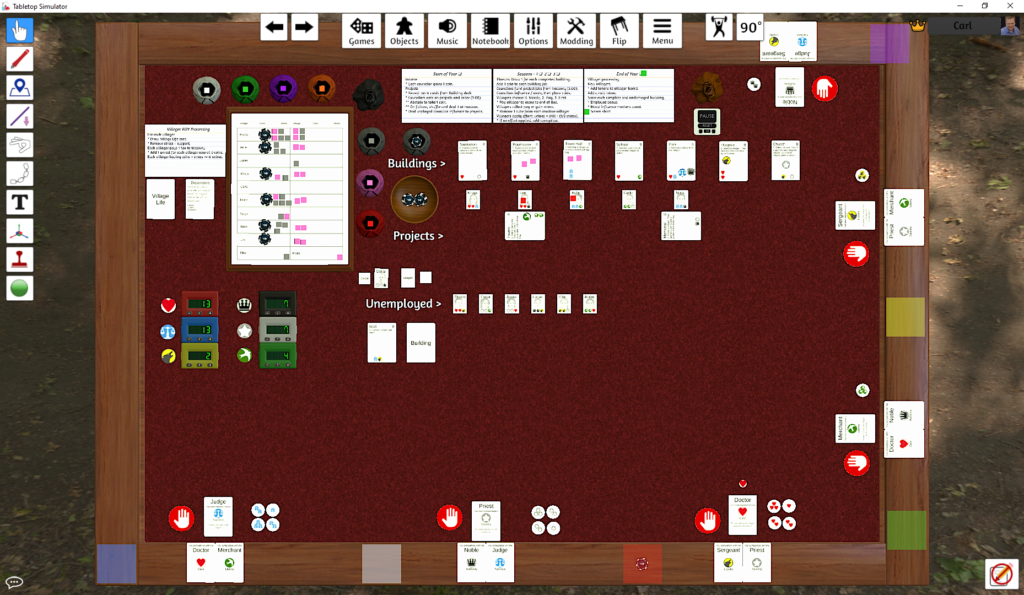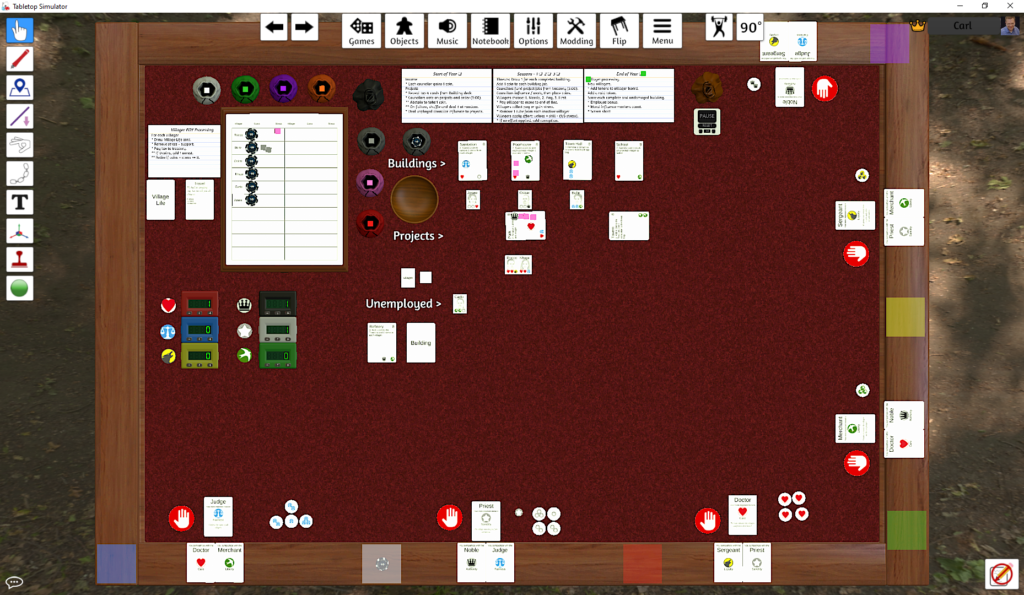Now that the village board is gone, the villagers are each represented by two cards:
- A small Worker card, which is moved around the Building card lines to show where the villager is working.
- A large Village card, arranged in a grid and used as a place to put the villager’s coins, stress, and support counters.

The arrangement of the Village cards also creates an opportunity to have villagers interact with adjacent Village cards as neighbors.
I wonder how much it will confuse the players to deal with abstract villagers that are represented by two components. It’s not like it’s a totally new mechanism: I’m basically using the micro cards where lots of other games (especially tactical games) would use figures. Something to watch for in playtesting.
I’ve pondered what to call the Village Life cards. Leaving them with that title is likely to cause people to confuse them with the Village deck. I don’t want to call them Event cards, because I haven’t ruled out the possibility of having village-wide Event cards affect the game. So now they are just Life cards.
I’ve added in the rules for community stress and support at the end of the year, and now I’m ready to solo playtest again. I wonder if I can get a full three years in before our playtest event on Saturday? If I cannot, that’s not a great sign for how long the game takes to play.
